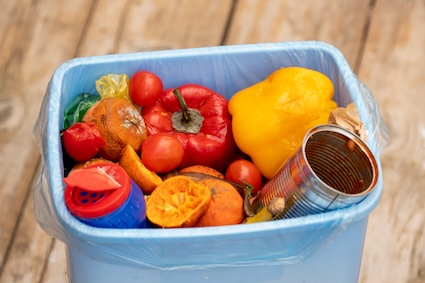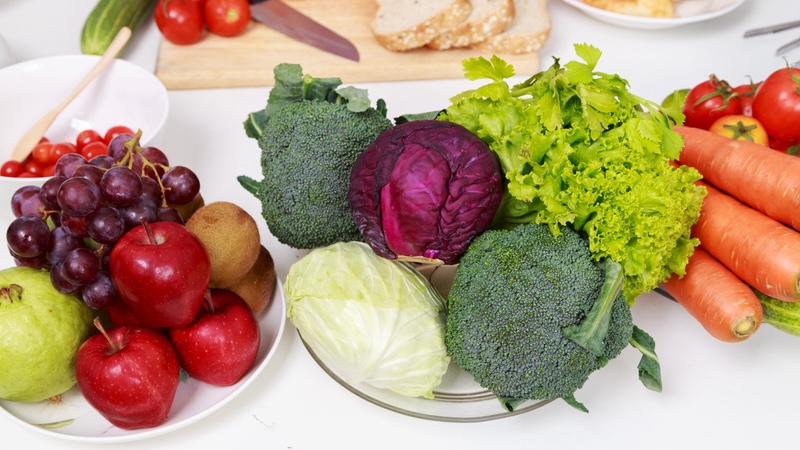If you get plenty of fruits and vegetables from the market, do you manage to eat them all before they go bad? Seniors Guide offers tips on how to make fruits and vegetables last longer, giving you the benefits of a healthy diet and cutting down on food waste.
A diet that includes a variety of fruits and vegetables promotes health benefits like lower blood pressure, decreased cholesterol, and more. Diets lacking in vegetables and fruits are a leading cause of micronutrient deficiencies and chronic diseases. Yet, most Americans do not meet the daily recommendation of two servings of fruits and two and a half servings of vegetables.
While citrus fruits are well-known for Vitamin C and leafy greens for folate, cruciferous vegetables such as broccoli, cauliflower, cabbage, kale and turnips provide a broader spectrum of nutrients, including cancer-fighting glucosinolates, antioxidants like carotenoids, and vital minerals such as calcium and selenium.
Make fruits and vegetables last longer
One of the challenges in the consumption of fruits and vegetables is their limited shelf life. Here are some tips and tricks for storing produce and lengthening their shelf life.
Tips for storing produce
 Many refrigerators have drawers with settings that control humidity for storing vegetables and fruits. The low-humidity setting is effective in slow ripening of fruits like apples. The high-humidity setting helps vegetables stay crisp. You can lengthen the life of your fruits and vegetables by storing them in separate drawers. Here are some other pointers:
Many refrigerators have drawers with settings that control humidity for storing vegetables and fruits. The low-humidity setting is effective in slow ripening of fruits like apples. The high-humidity setting helps vegetables stay crisp. You can lengthen the life of your fruits and vegetables by storing them in separate drawers. Here are some other pointers:
- Leafy greens: Some greens like spinach, lettuce and kale are sold in plastic boxes or bags. Blot excess moisture and wrap the greens in a paper or kitchen towel to keep them crisp and prevent wilting. Use within one week of purchase or by the “use by” date on the package.
- Tomatoes: Whole, fresh tomatoes do not need to be refrigerated. Keep the flavor and texture by storing them at room temperature. Once cut, tomatoes should be covered and stored in the refrigerator within two hours.
- Avocados: Underripe, green-skinned avocados ripen in about four days in the refrigerator. Once ripened (deep blue-green skin), they may last up to five days in the fridge. Store unused cut avocados on a plate with the cut side down. Drizzle with olive oil and cover with food wrap.
- Broccoli: Do not rinse broccoli until you are ready to use it. Store it in an open plastic bag in the vegetable drawer for about a week. If it feels limp, trim the stalk and stand it in one inch of water in the refrigerator overnight to revive it.
- Potatoes (yellow, white, blue), sweet potatoes and yams: Most root vegetables have a shelf-life of many months. Store them in a cool, dry place, such as a cupboard to avoid light.
- Onions: Keep away from light to prevent sprouting. Onions give off a ripening gas, store them separately from other root vegetables.
- Fresh herbs and green onions: Herb bunches from the supermarket often come twist-tied together. Undo the tie and set them in a jar with 1-2 inches of water. Remove any discolored or wilted leaves. Cover the herbs with a large zip-locked bag and secure them with a band. Change the water daily.
- Basil: Pay attention to the temperature at which you bought your basil and keep it consistent at home. If you bought it from the refrigerated section, store it in the refrigerator. Basil bought at the farmer’s market should be kept at room temperature. Put the basil in a jar of water on the kitchen counter, like a bouquet of flowers. If you grow basil in soil, sunlight is essential. Store it at a southern-facing window or under a grow light.
Preparing and freezing produce
- Bananas: You can freeze bananas with or without the skin to use in smoothies and other recipes.
- Spinach: Blanch before you freeze it to help keep the flavor. When you are ready to eat it, thaw it out and add to your meal as you would with fresh spinach.
- Zucchini: Steam zucchini before freezing to preserve its freshness. Thaw it out before cooking with it when you are ready.
- Winter squash and root vegetables: These are best when roasted before frozen. Once thawed, they are ready to be reheated and served.
- Canned produce: Freeze the unused portions of canned items like tomato paste and coconut milk in ice cube trays.
Using more parts of your produce
- Leeks: Some recipes only call for the white ends of leeks. Keep the green ends to make your own homemade vegetable stock.
- Celery and fennel: Use celery leaves and fennel fronds as a fresh, decorative garnish on a variety of dishes.
- Broccoli: Fresh broccoli stalks can be diced and roasted for a delightful side dish.
- Herbs: Tender stems of herbs like cilantro or parsley provide the same unique flavor as their leaves for use in recipes. Use them in dishes for added flavor.
- Carrots: Grow beautiful small white flowers out of your unused carrot tops by planting them in a pot and covering them with soil.
- Sweet potatoes: Grow sweet potatoes from the sprouts of your current sweet potatoes.
Read more articles on health and nutrition on Seniors Guide:
Shopping Strategies Can Help You Eat More Fruits and Vegetables




